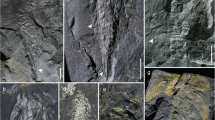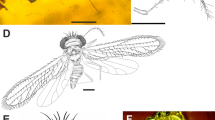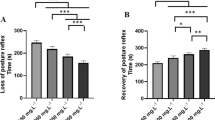Abstract
IT is generally supposed that the plate-like abdominal gills occurring in some ephemerid nymphs are respiratory organs, although little experimental evidence is available to support this view. Moreover, both Dewitz1 and Cuénot2 have shown that these gills are not essential to life. Recently, another function has been ascribed to these structures by Eastham3, who shows that in the nymph of the mayfly, Ecdyonurua venosus, they act as paddles which bathe with water the gill tufts attached to their bases.
This is a preview of subscription content, access via your institution
Access options
Subscribe to this journal
Receive 51 print issues and online access
$199.00 per year
only $3.90 per issue
Buy this article
- Purchase on SpringerLink
- Instant access to full article PDF
Prices may be subject to local taxes which are calculated during checkout
Similar content being viewed by others
References
Dewitz, H., Zool. Anz., 13, 525 (1890).
Cuénot, L., “L'Adaptatiou”, Paris (1925).
Eastham, L., J. Exp. Biol., 14, 219 (1937).
Fox, H. Munro, Wingfield, C. A., and Simmonds, B. G., J. Exp. Biol., 14, 210 (1936).
Author information
Authors and Affiliations
Rights and permissions
About this article
Cite this article
WINGFIELD, C. Function of the Gills of the Mayfly Nymph, Cloeon dipterum. Nature 140, 27 (1937). https://doi.org/10.1038/140027a0
Issue date:
DOI: https://doi.org/10.1038/140027a0
This article is cited by
-
Studies on the respiration (and osmoregulation) of animals
Zeitschrift f�r Vergleichende Physiologie (1937)
-
Studies on the respiration of animals
Zeitschrift f�r Vergleichende Physiologie (1937)



